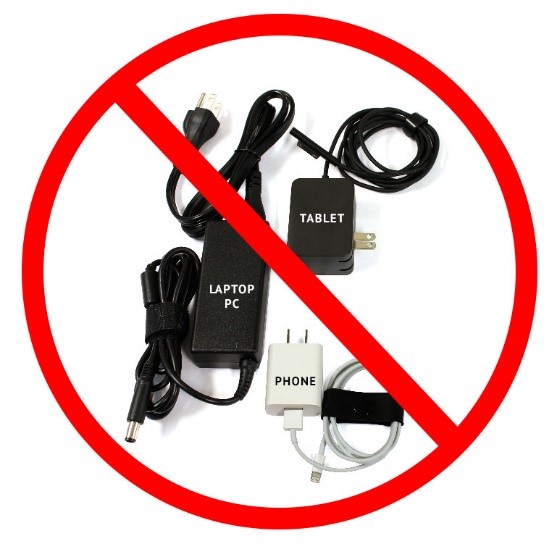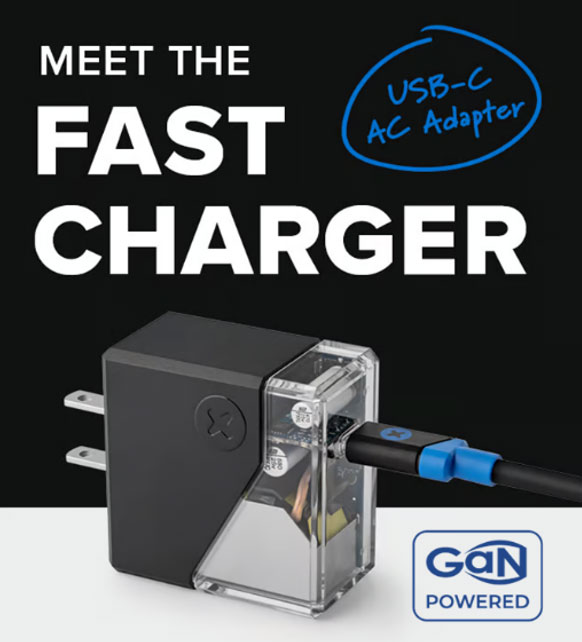GaN and USB-C ubiquity are simplifying life and improving global sustainability
Apple announced today that its new iPhone 15 will have a USB-C charging port instead of the long-running proprietary Lightning port. This shift aligns with European Union law requiring devices to adopt a standard charging connection by December 2024. Under the law, by the end of 2024, all mobile phones, tablets, and cameras sold in the EU must be equipped with a USB Type-C charging port, and from spring 2026, the obligation will extend to laptops.
The new law is part of a broader EU effort to reduce e-waste and to empower consumers to make more sustainable choices. According to the European Commission, these new obligations may help consumers save up to 250 million euros annually on unnecessary charger purchases. The disposal of unused chargers accounts for about 11,000 tons of e-waste annually.
In an era marked by innovation and sustainability, this change by Apple represents a significant step in the world of charging technology. Paired with the capabilities of gallium nitride (GaN) transistors in chargers, we see a future free from the inconvenience of hunting for compatible chargers or struggling with a tangle of cables combined with a significant reduction in e-waste.
Charging complexity: costly and environmentally harmful
Until recently, consumers had to carry multiple chargers and multiple types of cables, creating inconvenience and clutter along with higher costs and environmental concerns. For instance, laptop PCs typically required chargers with 19 V AC inputs, while Android-based phones used USB-C connectors, and iPhones relied on Lightning ports. Each connector is unique, requiring consumers to carry multiple cables and chargers to charge their devices.
Additionally, different devices require different power levels, most often tailored to the charging device, resulting in 5-20 W chargers for phones, 30-45 W chargers for tablets, and 65-100 W chargers for laptop PCs. Many of us carried three or more chargers and several cables to match the device’s USB, Lightning, or Barrel-style charging port.
Streamlined charging—finally!
Here are the pivotal advancements that have simplified the charging landscape:
 Standardized USB-C charge port inputs and cables: Most common devices, including laptops, tablets, handheld gaming consoles, and smartphones, have transitioned to USB-C charging inputs. This shift to a standard connector type simplifies charging. With USB-C becoming the standard across various device categories, consumers no longer need to carry multiple types of cables or worry about interoperability and compatibility. Apple’s change to USB-C charging for their phones, which they have already made for their laptops and tablets, closes the last major exception to USB-C charging ubiquity. Adopting USB-C as a universal connector means that only one type of cable is required to charge various devices. Some people may still carry a second cable to charge multiple devices simultaneously, but the need for a diverse collection of cables for different devices disappears.
Standardized USB-C charge port inputs and cables: Most common devices, including laptops, tablets, handheld gaming consoles, and smartphones, have transitioned to USB-C charging inputs. This shift to a standard connector type simplifies charging. With USB-C becoming the standard across various device categories, consumers no longer need to carry multiple types of cables or worry about interoperability and compatibility. Apple’s change to USB-C charging for their phones, which they have already made for their laptops and tablets, closes the last major exception to USB-C charging ubiquity. Adopting USB-C as a universal connector means that only one type of cable is required to charge various devices. Some people may still carry a second cable to charge multiple devices simultaneously, but the need for a diverse collection of cables for different devices disappears. A single GaN-powered charger: The EU mandate aligns with another development that makes charging more convenient: GaN technology. GaN addresses the need for a single charger that is both versatile and efficient. GaN chargers are smaller and more efficient than traditional chargers, making them ideal for the wide range of devices people use and carry. Whether it is a smartphone, tablet, notebook PC, or gaming device, consumers can utilize a single GaN charger that will charge each device—providing the versatility that enables consumers to lighten the weight of their backpack, reduce the number of chargers cluttering their homes, and decrease content going into landfills.
A single GaN-powered charger: The EU mandate aligns with another development that makes charging more convenient: GaN technology. GaN addresses the need for a single charger that is both versatile and efficient. GaN chargers are smaller and more efficient than traditional chargers, making them ideal for the wide range of devices people use and carry. Whether it is a smartphone, tablet, notebook PC, or gaming device, consumers can utilize a single GaN charger that will charge each device—providing the versatility that enables consumers to lighten the weight of their backpack, reduce the number of chargers cluttering their homes, and decrease content going into landfills.
GaN addresses the challenge of consumers needing a single, versatile charger by offering an energy-efficient high-power output resulting in miniature chargers compatible with all devices in day-to-day use. GaN simplifies the charging experience and has become critical in creating a more sustainable and user-friendly ecosystem.
A simpler, more sustainable solution
Standardizing device charging input ports simplifies our lives, saves us money, and reduces electronic waste. The pervasiveness of USB-C charge ports dovetails nicely with the mainstream adoption of GaN-powered chargers, which enables users only to need a single charger that is smaller, faster, and more environmentally friendly. Together, these developments promise a greener and more convenient future for consumers, where charging requires only one cable and one charger for all our devices.


